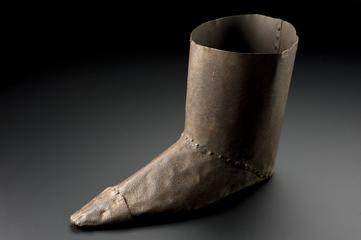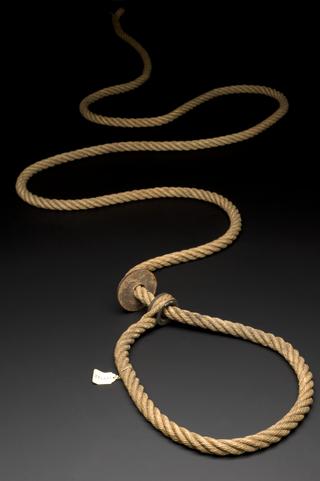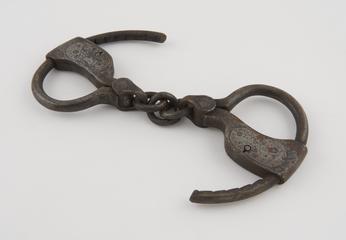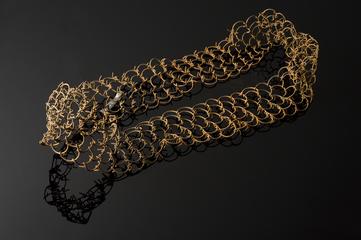





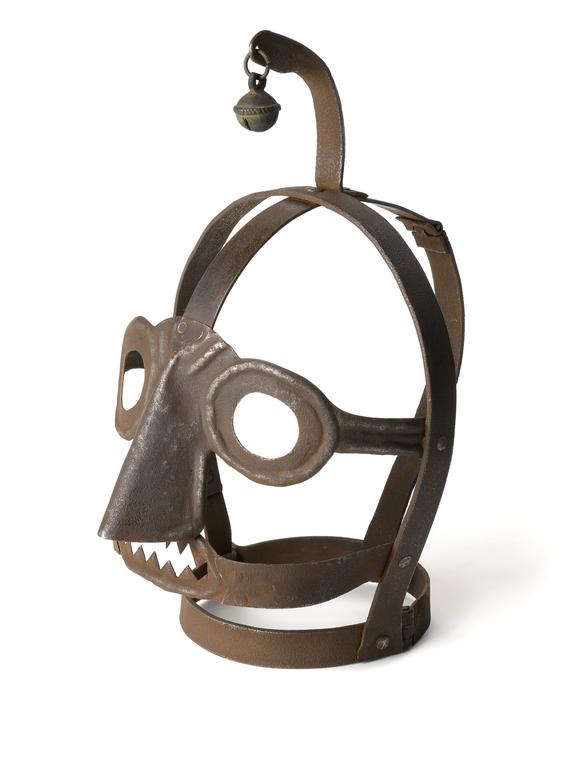


Scold's bridle mask which partially covers face, large nose-piece and jagged mouth, hinged neck ring and bell suspended at top of head, probably German, 1550-1800
The custom of using scold’s bridles (sometimes known as ‘branks’) developed in Britain in the 1500s, spreading to Northern European countries including Germany. Such devices have been written into history as a misogynistic penalty reserved for ‘gossiping’ or ‘nagging’ women, but there is evidence they were used on men too. The word ‘scold’ was a legal term for someone deemed to have disturbed the peace with their voice – whether through quarrelling, drunkenness, or slander. As well as humiliating the wearer, the bridle was intended to prevent talking, reflecting a culture of repressing outspoken women or those who failed to conform to societal expectations. Its use on men was usually to punish blaspheming, or as a method of restraining prisoners.
There were notable differences between treatment according to gender, with men tending to be sent to the stocks or pillories, while women were publicly paraded in the masks, which were sometimes decorated with animal features to shame them further. This example has a bell to create a noise, drawing additional attention to what was happening. Most included gags – sometimes with a spike – that would be inserted into the mouth to restrain the tongue.
Records of the use of scold’s bridles are few and far between, possibly because it was an illegal form of punishment in England being considered a form of torture. That said, instances were reported as late as the mid-1800s. This example was purchased at auction for Sir Henry Wellcome's museum collection in 1935; little is known about its history.
Look closer
Scold’s bridleDetails
- Category:
- Wellcome (general)
- Collection:
- Sir Henry Wellcome's Museum Collection
- Object Number:
- A138325
- Measurements:
-
overall: 352 mm x 217 mm x 290 mm, 1.062 kg
- type:
- scold's bridle
- credit:
- Glendining
